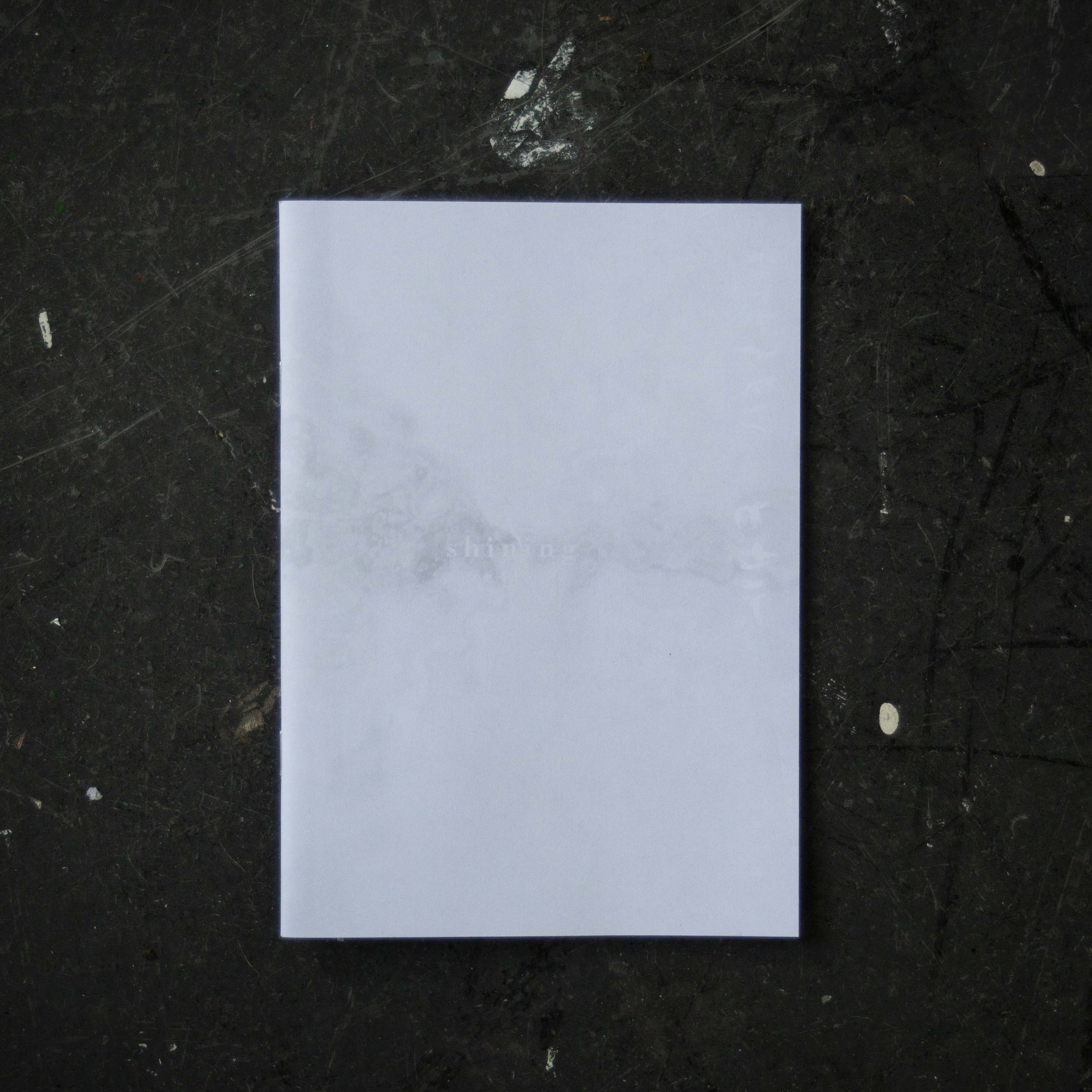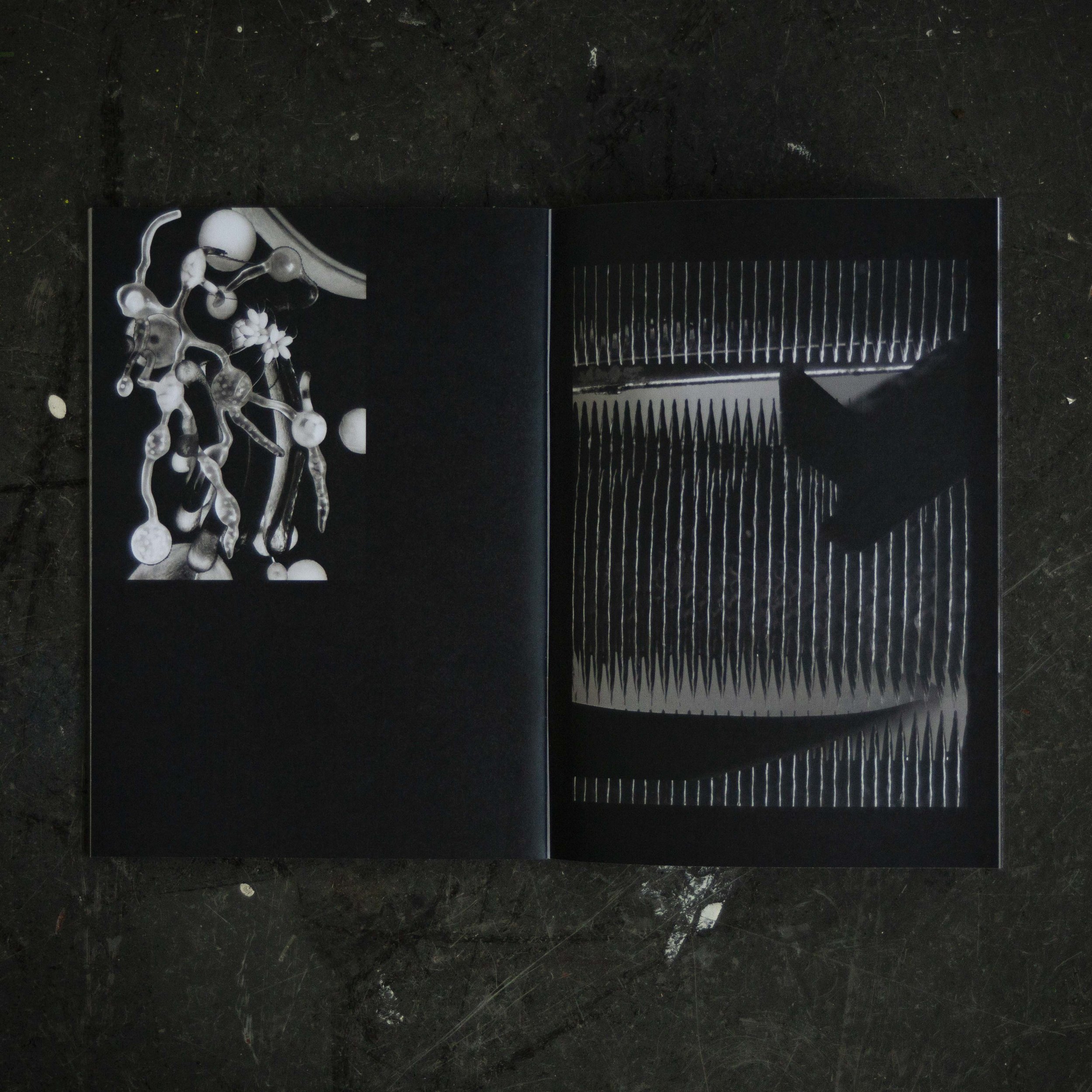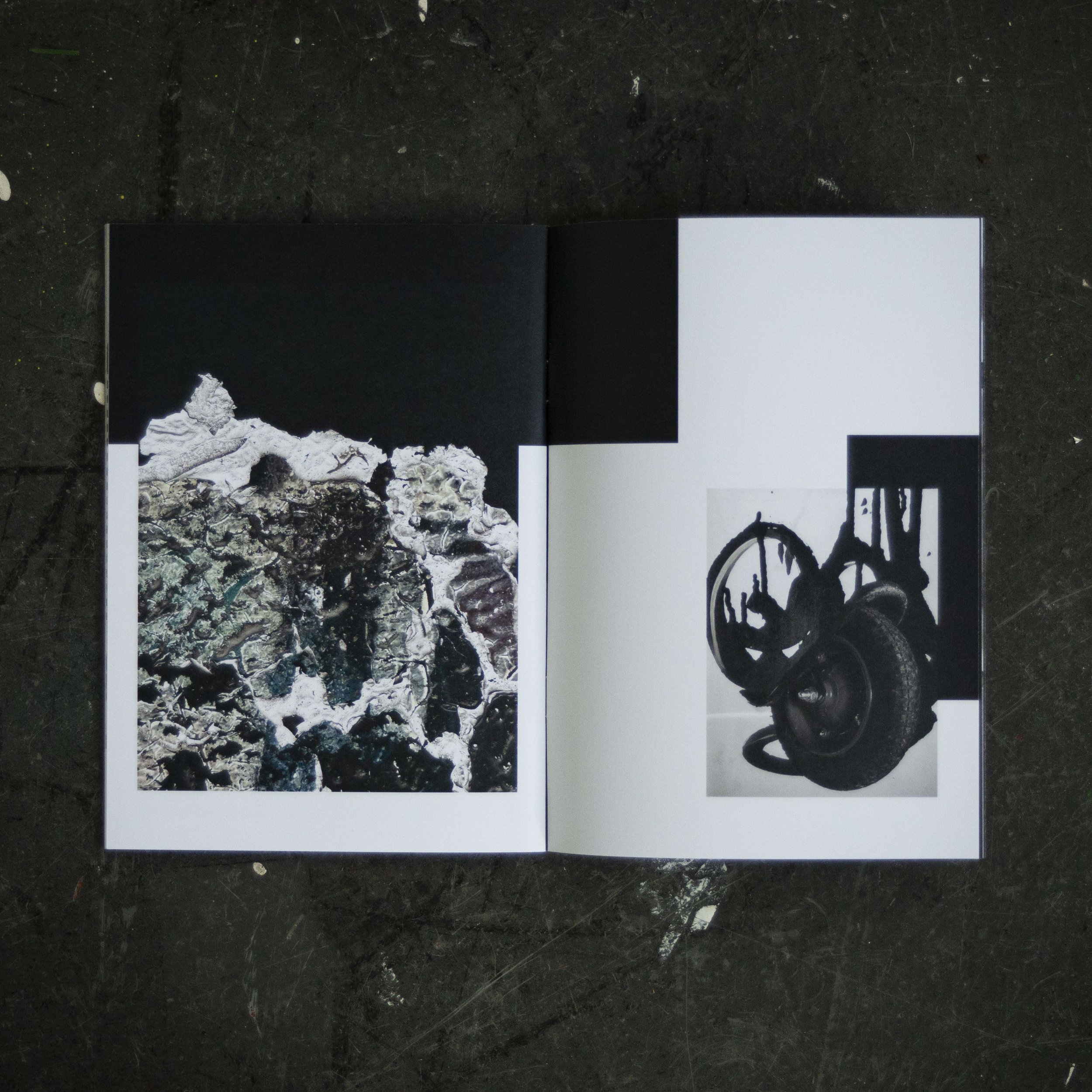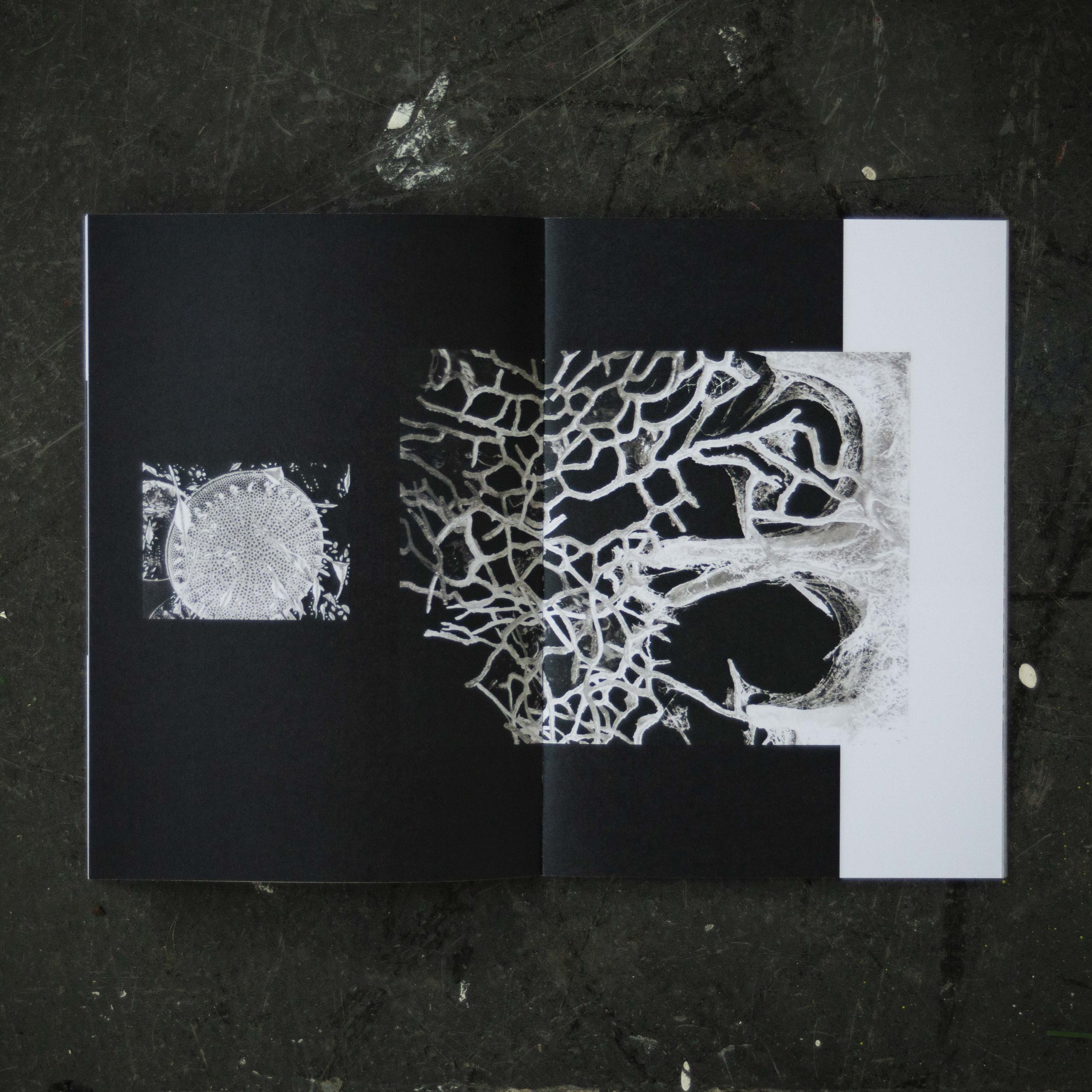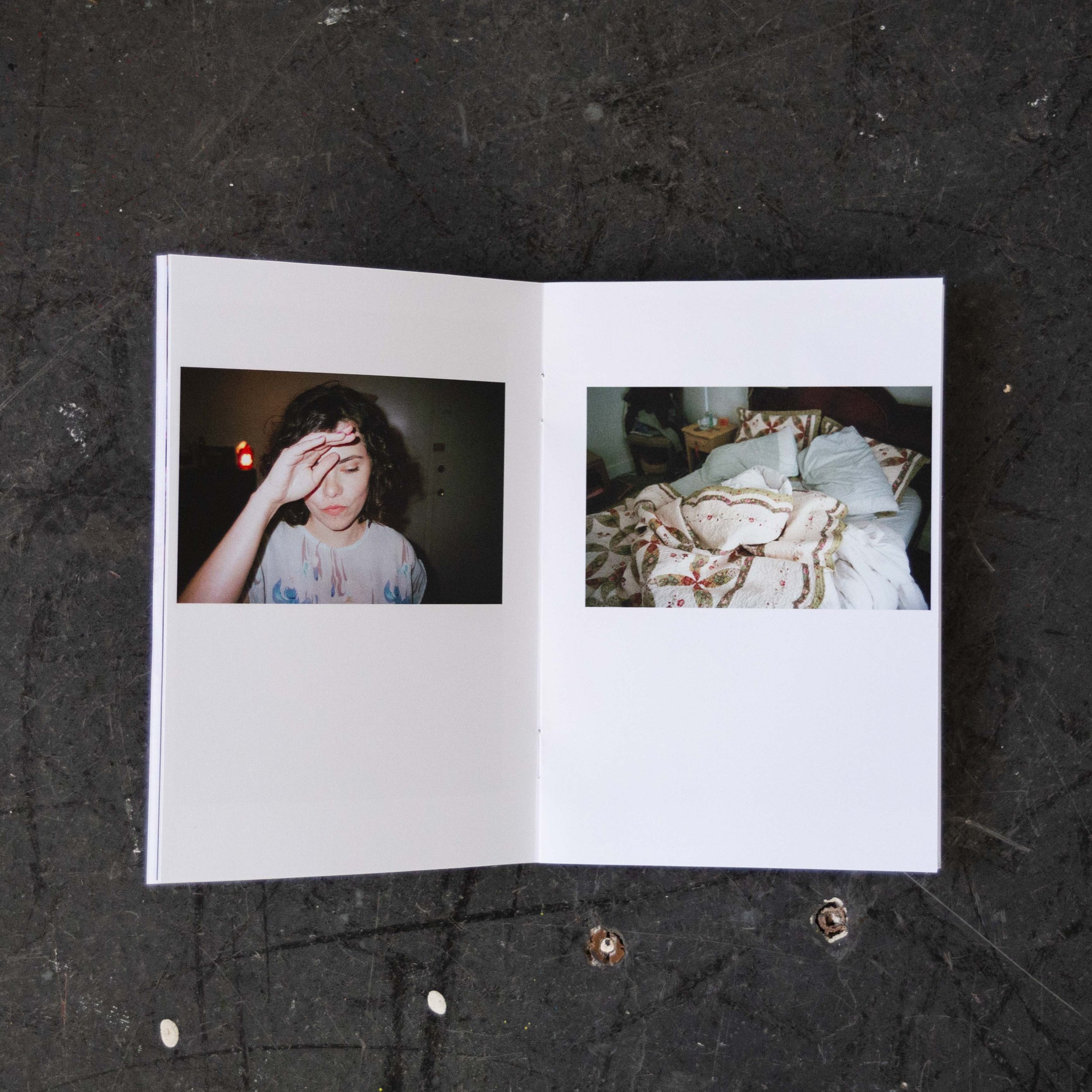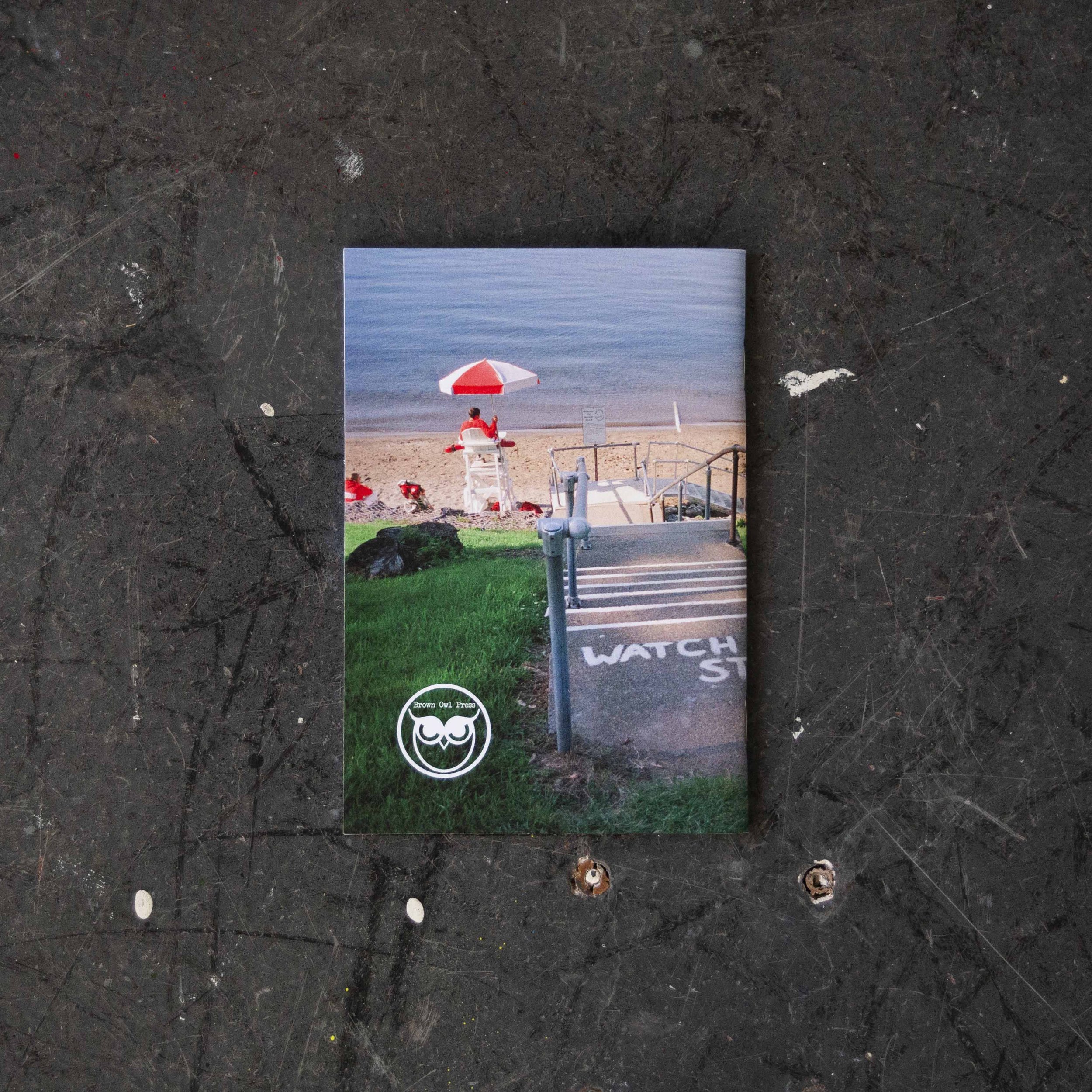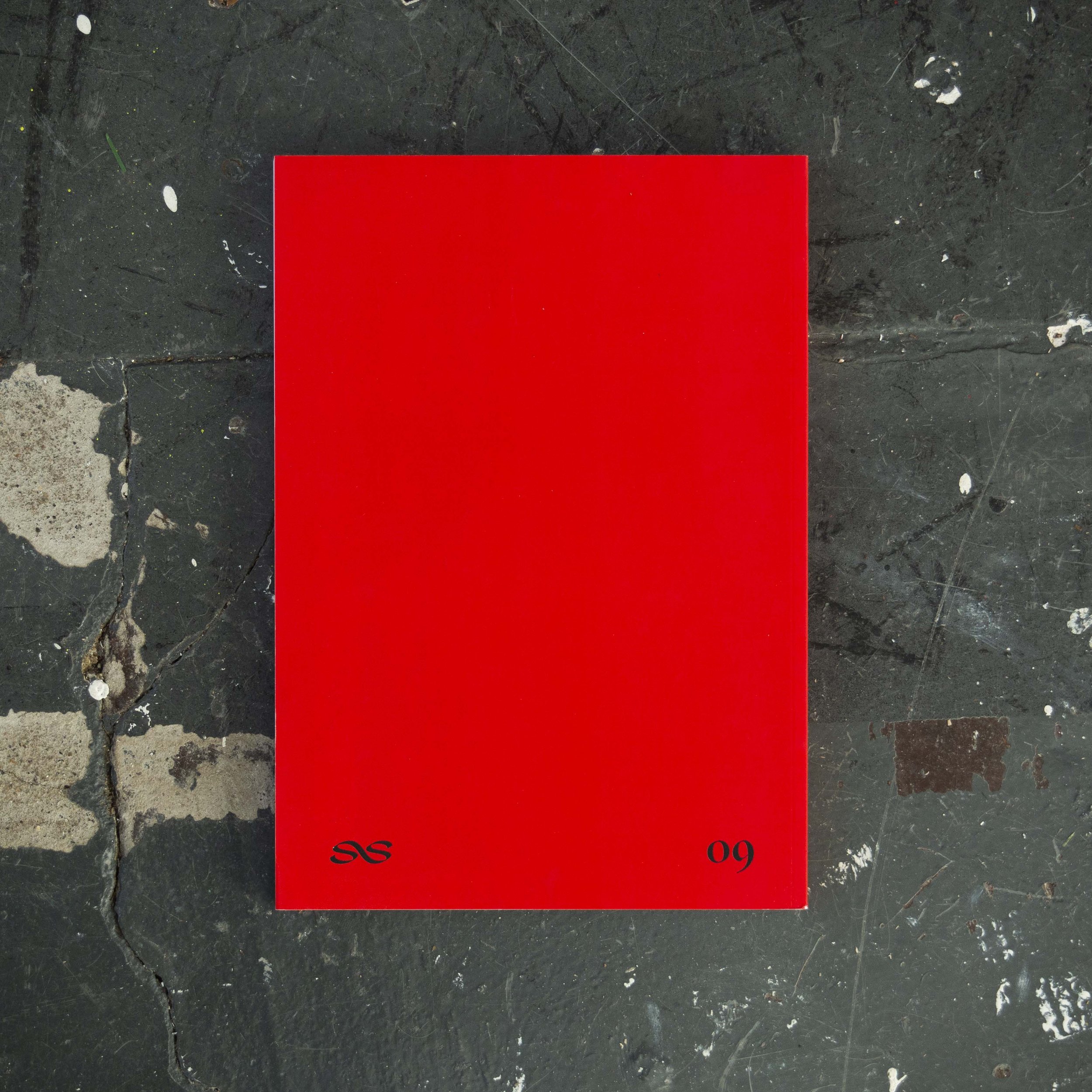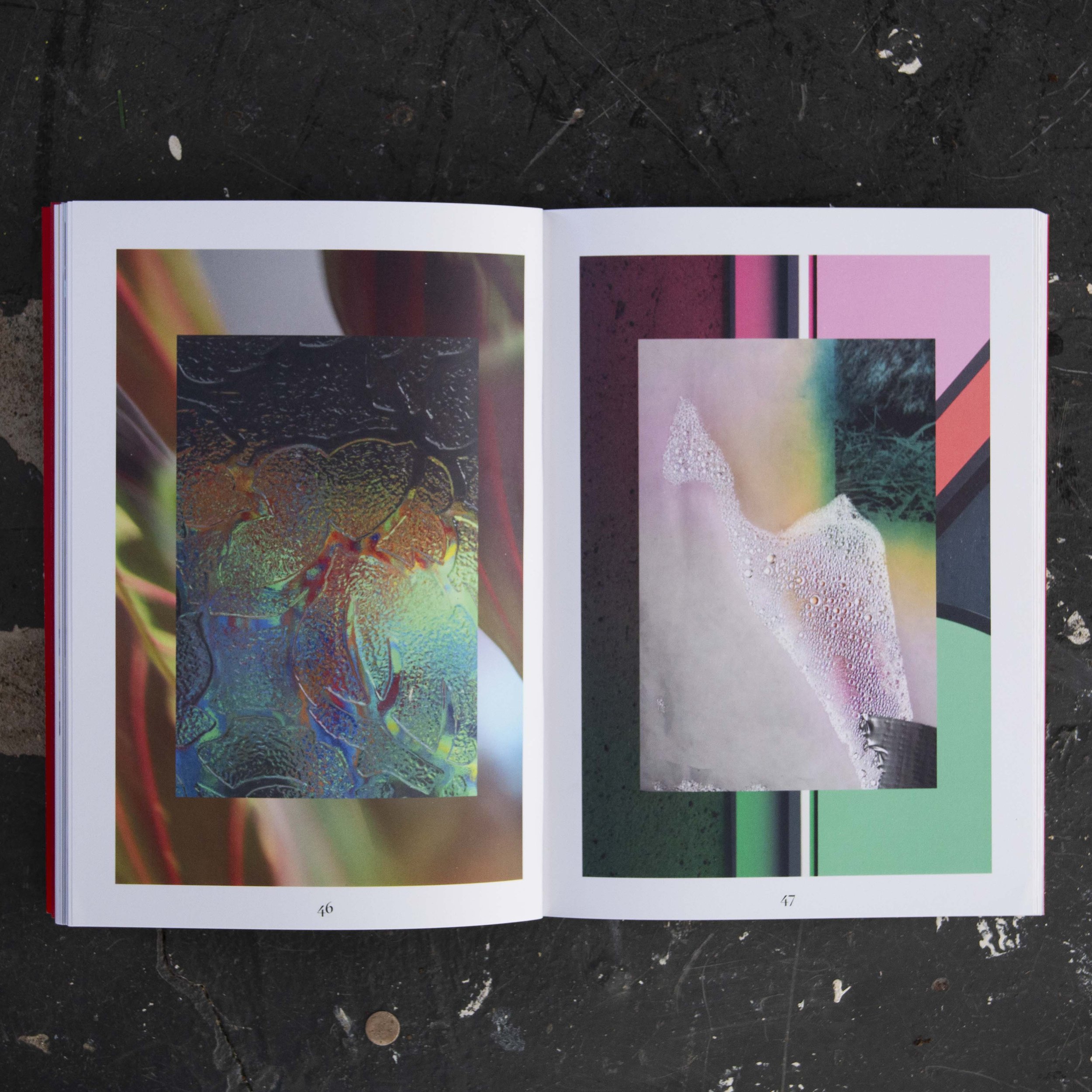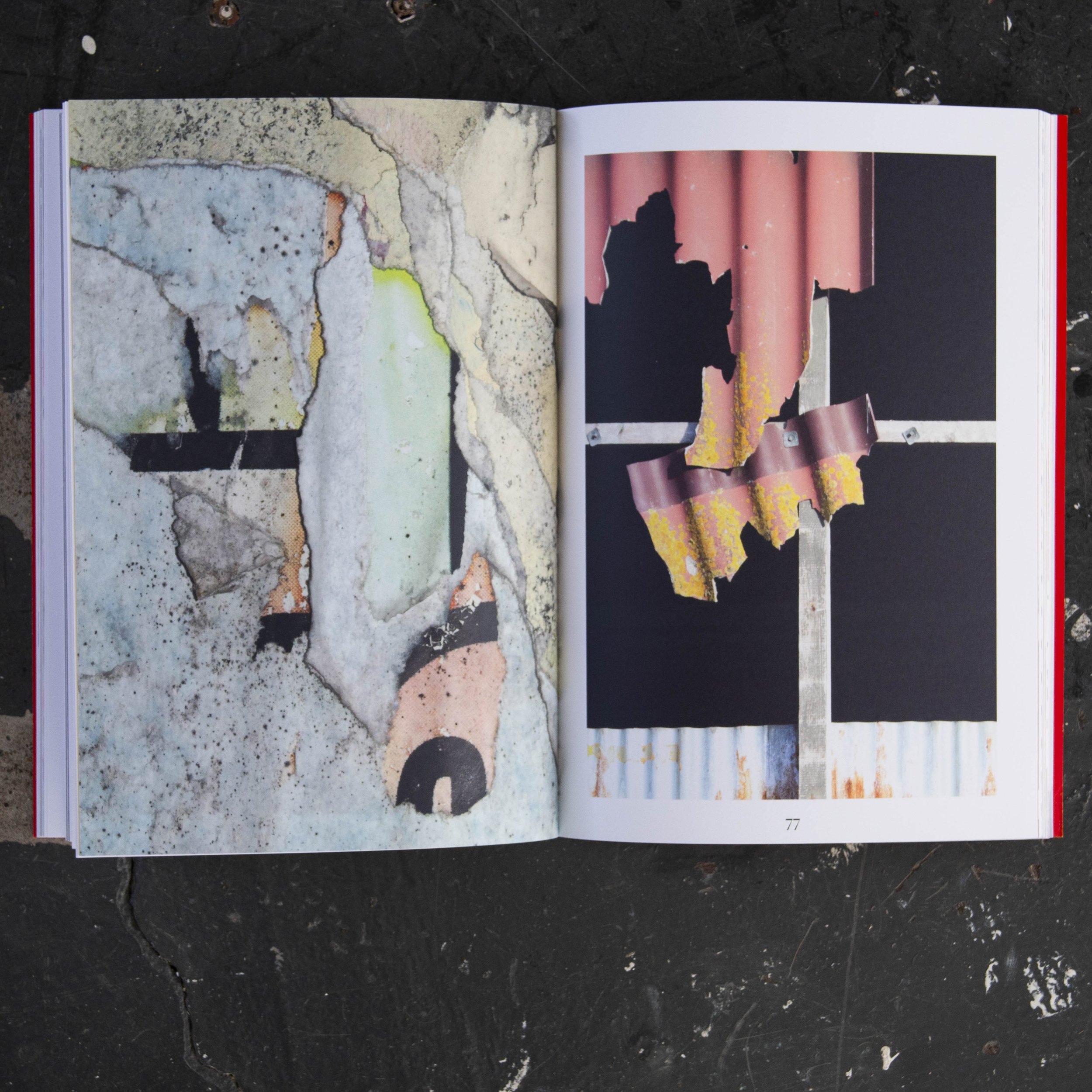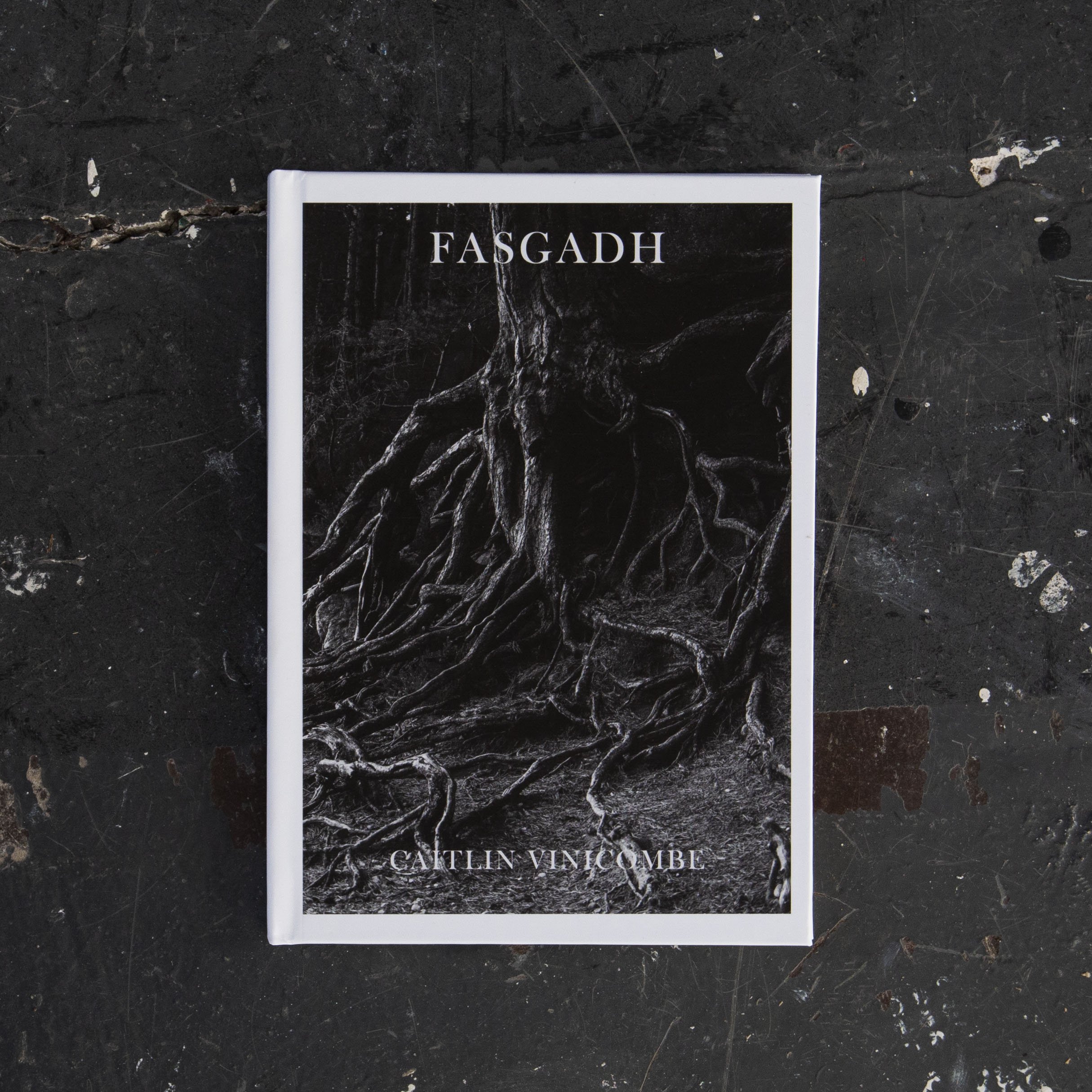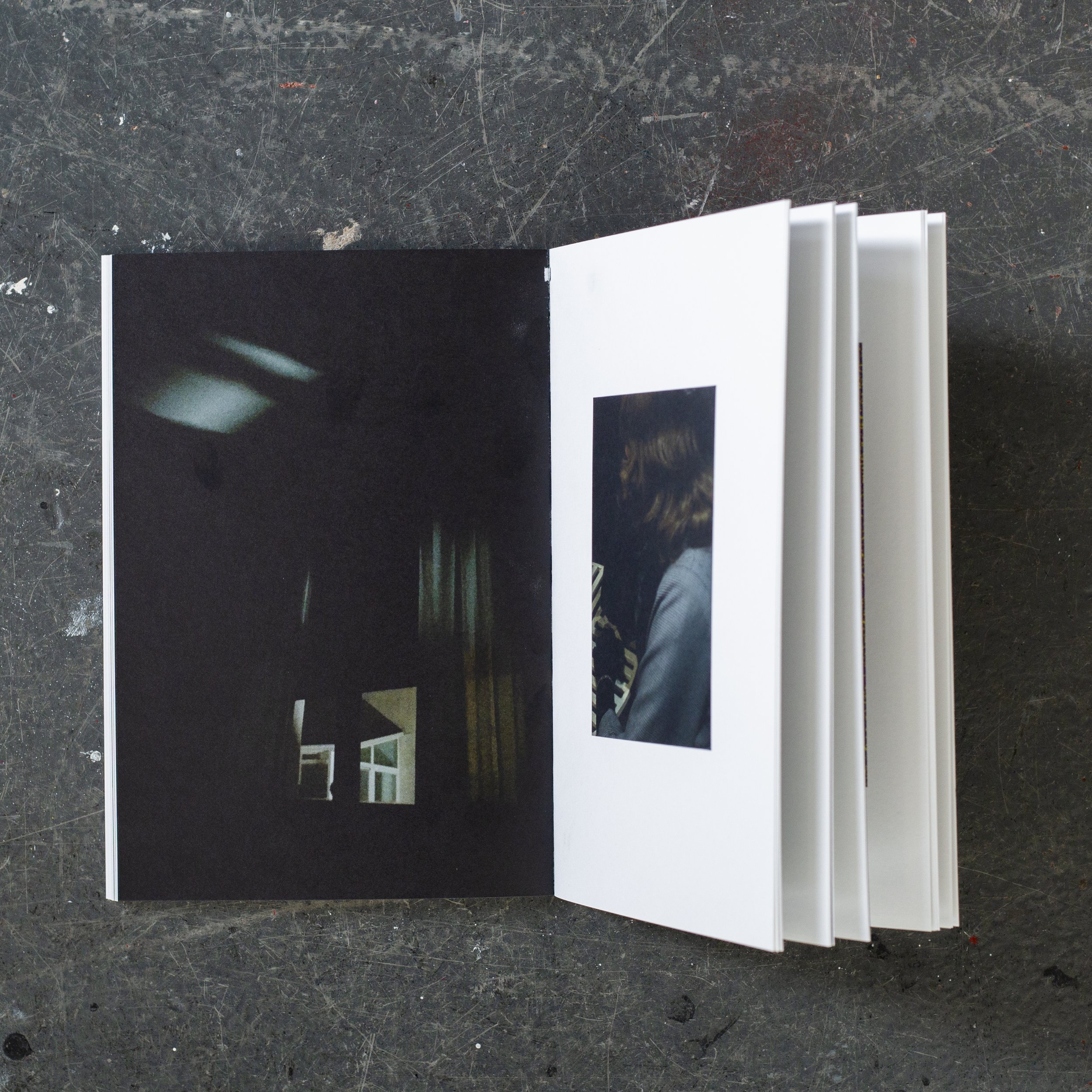 Image 1 of 5
Image 1 of 5

 Image 2 of 5
Image 2 of 5

 Image 3 of 5
Image 3 of 5

 Image 4 of 5
Image 4 of 5

 Image 5 of 5
Image 5 of 5






Chiasm - Tyrone Williams & Madison Dinelle
Many photographers have experimented with the 'Call & Response' model of collaboration, where images function like links in a chain — a visual duel, or game of chess. This book, in which these two photographers pair up their photographs, feels more to me like a matching card game.
“Chiasm” describes in biology the point at which two filamentous structures like a tendon or nerve diagonally intersect in an X, most notably the nerves connecting each eyeball to the brain’s opposite hemisphere. In language, chiasm describes a compound sentence in which, without word repetition, the first half’s grammar is inverted in the second.
Take the second spread. The metal fence gives definition to the green fabric beneath, the ripples’ form structured by the shadow projected upon it. On the right, reflections in undulating metal break down the green wall’s structure. They are parallel in content; in relationship, inverted. As discrete visual objects, they achieve a kind of synthesis.
Though contrived well with the art of close selection, all these pictures are true to reality; they aren’t heavily manipulated, aren’t synthetic. We see these things in daily life, and there little of the broken brickwork, tangled wires, street puddles, plastic packaging and garish shop signs are things we particularly want to notice.
Yet here their aesthetic potential is recognised and demonstrated. There is real value in sharing such curios with others, for, through love of visual communication, a project like Chiasm might emerge. As Dinelle & Williams have, two people might find crossover in their ways of seeing — each side sharing a little of the other, but never quite overlapping.
Published By Ceremony Press
Many photographers have experimented with the 'Call & Response' model of collaboration, where images function like links in a chain — a visual duel, or game of chess. This book, in which these two photographers pair up their photographs, feels more to me like a matching card game.
“Chiasm” describes in biology the point at which two filamentous structures like a tendon or nerve diagonally intersect in an X, most notably the nerves connecting each eyeball to the brain’s opposite hemisphere. In language, chiasm describes a compound sentence in which, without word repetition, the first half’s grammar is inverted in the second.
Take the second spread. The metal fence gives definition to the green fabric beneath, the ripples’ form structured by the shadow projected upon it. On the right, reflections in undulating metal break down the green wall’s structure. They are parallel in content; in relationship, inverted. As discrete visual objects, they achieve a kind of synthesis.
Though contrived well with the art of close selection, all these pictures are true to reality; they aren’t heavily manipulated, aren’t synthetic. We see these things in daily life, and there little of the broken brickwork, tangled wires, street puddles, plastic packaging and garish shop signs are things we particularly want to notice.
Yet here their aesthetic potential is recognised and demonstrated. There is real value in sharing such curios with others, for, through love of visual communication, a project like Chiasm might emerge. As Dinelle & Williams have, two people might find crossover in their ways of seeing — each side sharing a little of the other, but never quite overlapping.
Published By Ceremony Press
Many photographers have experimented with the 'Call & Response' model of collaboration, where images function like links in a chain — a visual duel, or game of chess. This book, in which these two photographers pair up their photographs, feels more to me like a matching card game.
“Chiasm” describes in biology the point at which two filamentous structures like a tendon or nerve diagonally intersect in an X, most notably the nerves connecting each eyeball to the brain’s opposite hemisphere. In language, chiasm describes a compound sentence in which, without word repetition, the first half’s grammar is inverted in the second.
Take the second spread. The metal fence gives definition to the green fabric beneath, the ripples’ form structured by the shadow projected upon it. On the right, reflections in undulating metal break down the green wall’s structure. They are parallel in content; in relationship, inverted. As discrete visual objects, they achieve a kind of synthesis.
Though contrived well with the art of close selection, all these pictures are true to reality; they aren’t heavily manipulated, aren’t synthetic. We see these things in daily life, and there little of the broken brickwork, tangled wires, street puddles, plastic packaging and garish shop signs are things we particularly want to notice.
Yet here their aesthetic potential is recognised and demonstrated. There is real value in sharing such curios with others, for, through love of visual communication, a project like Chiasm might emerge. As Dinelle & Williams have, two people might find crossover in their ways of seeing — each side sharing a little of the other, but never quite overlapping.
Published By Ceremony Press
